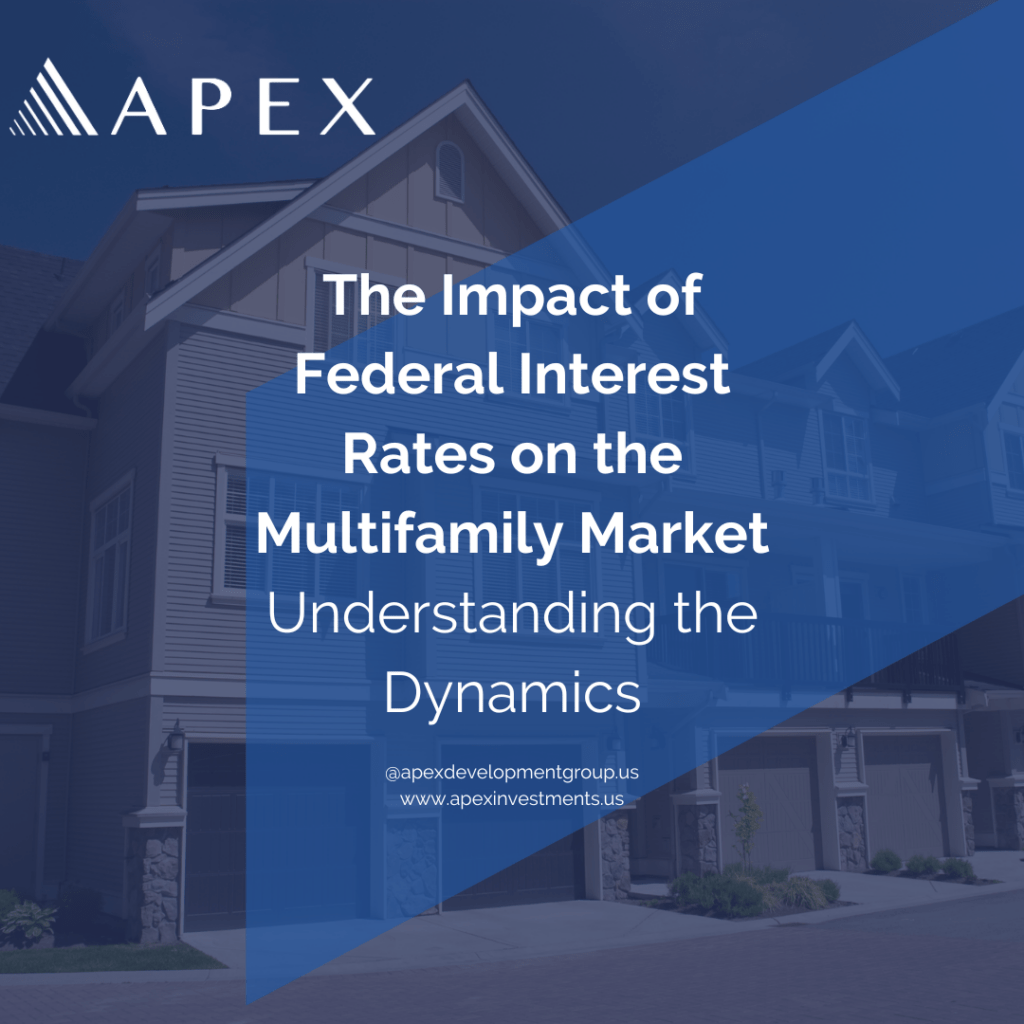
Impact of Federal Interest Rates on The Multifamily Market
Federal Interest Rates refers to the rates at which depository institutions (mainly commercial banks), lend and borrow funds held at the Federal Reserve.
The Federal Funds Rate serves as the benchmark rate for banks and other depository institutions when determining the interest rates at which they will lend money to third parties. To simplify this definition, let’;s imagine you are a bank preparing to lend money to a real estate developer. The first factor you consider when determining the lending rate to the developer is the rate at which you can borrow money. Based on that, you calculate an additional percentage (spread) to ensure profitability. In this article we will talk about the impact of Federal Interest Rates in the Multifamily Market.
Following this line of thought, higher Federal Interest Rates result in increased borrowing costs. In multifamily deals, the capital structure typically consists of a significant portion of debt. Consequently, during periods of high interest rates, investors experience reduced cash flow due to higher monthly interest payments to lenders. However, there are strategies available to mitigate and understand the impact of Federal Interest Rates on the Multifamily market.
How do Multifamily Investors protect themselves from rising interest rates?
When entering debt obligations with fixed rates for multifamily projects, structuring companies often engage in rate cap agreements with third parties. A rate cap agreement can be likened to an insurance policy designed to protect against rising interest rates. Under this agreement, a strike rate is negotiated, and if the interest rate exceeds the strike rate, the borrower receives payments from the third party to compensate for the excess increase beyond the strike rate.
To illustrate with an example, assume that you borrow $1000 at a rate of 4% + SOFR, now of the purchase, the SOFR sits at 2% and its value increases as the Federal Funds Rate increases.
Therefore, your overall rate is 6% at the same time, you engage in a rate cap agreement with a SOFR strike rate of 3%. Please see below a summary of what would happen as the SOFR rises.
| Notional | Margin | Total SOFR | Total Rate | Interest Payment | Strike Rate | Rate Cap Reimbursement | Net Payment |
| $ 1,000 | 4.00% | 2.00% | 6.00% | $5.00 | 3% | – | $5.00 |
| $ 1,000 | 4.00% | 2.50% | 6.50% | $5.42 | 3% | – | $5.42 |
| $ 1,000 | 4.00% | 3.00% | 7.00% | $5.83 | 3% | – | $5.83 |
| $ 1,000 | 4.00% | 3,50% | 7.50% | $6.25 | 3% | $0.42 | $5.83 |
| $ 1,000 | 4.00% | 4.00% | 8.00% | $6.67 | 3% | $0.83 | $5.83 |
As you may have noticed, when the SOFR rate exceeds the strike price, the net payment will always be the same, because the inflows received as a part of the rate cap reimbursement will offset the higher interest payment.
Always make sure that you are investing in a reputable Multifamily Structuring Firm that has the expertise needed to hedge against interest rate risk.
